Description of the species of grass parrots and the rules for their maintenance
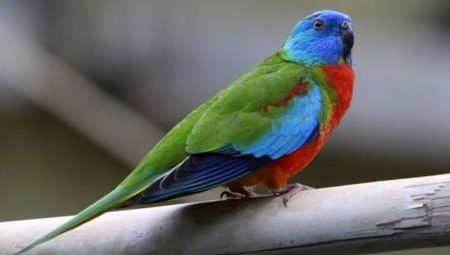
If you have decided on a difficult relationship with birds as pets, and ordinary canaries and budgerigars seem boring to you, pay attention to grass parrots. Their friendly disposition and bright plumage will quickly win the hearts of your household.
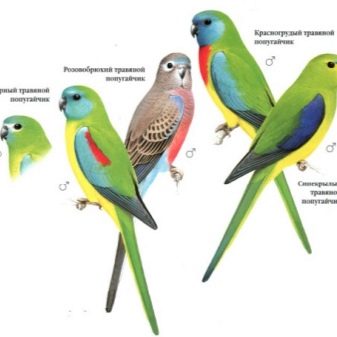
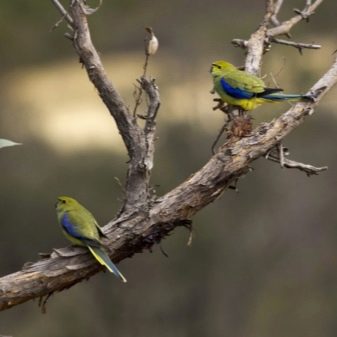
This bird is small in size - an adult usually barely reaches 25 cm, with very bright beautiful plumage. Most birds have a predominantly green color with various shades. Australia and the island of Tasmania adjacent to the mainland are considered the homeland of the feathered. In natural conditions, these parrots prefer to settle in eucalyptus forests with forbs. They feed on grass seeds, small berries and insects.
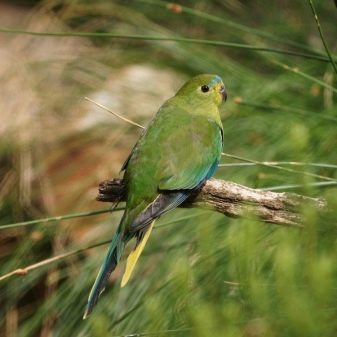
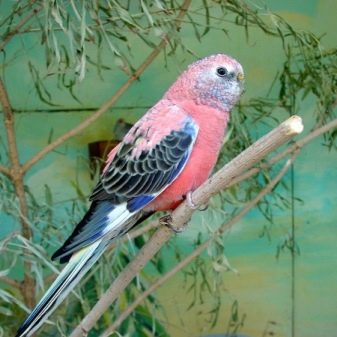
Peculiarities
Unlike many of their relatives, grass parrots move mainly on the ground, and fly only in exceptional cases. In nature, they are perfectly oriented in dense grass, preferring to take off only to the height of a bush. For their permanent maintenance at home, it is advisable to purchase a spacious aviary of at least 1 meter in length.
Grass parrots are quite friendly and easy to tame. Despite the fact that the bird is constantly moving, it does not make unnecessary noise. Grass parrots breed well in captivity - a female can lay eggs 1-2 times a year. Childbearing age begins at about 8-9 months, but experts do not recommend mating birds before they are one year old.
In order for the birds to feel comfortable, it is not recommended to place more than one pair in one enclosure, as adult males begin to quarrel with each other.

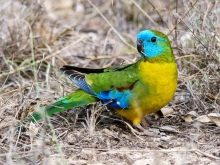
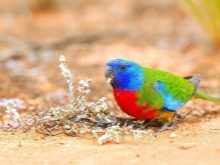
How to contain?
Since these birds are native to the tropics, the conditions for keeping them in captivity should be close to natural ones. The room with the aviary should be warm, without drafts. The optimum temperature is +20 degrees Celsius, and the air humidity is at least 60%. Grass parrots are active in the afternoon. During the day, the bird almost does not move, and closer to sunset it begins its trills, outputting them with its not very loud, but rather pleasant and melodic voice.
Therefore, in the evening, you should take care of additional lighting.... The bird is very shy, so the transition from daylight to evening lighting must be carried out smoothly. The sudden onset of darkness can stress the bird. It is believed that a quiet whistle can calm an agitated bird, but loud sounds, on the contrary, are very exciting and annoying. With proper maintenance, grass parrots in captivity live on average 12-15 years, in some cases they lived up to 20 years.
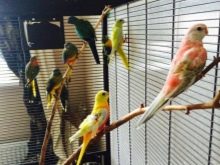
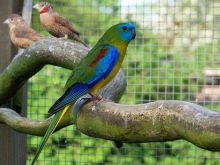
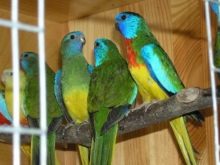
What to feed?
At home, parrots feed on a grain mixture. Food for canaries, oat and other cereals, millet, sunflower seeds are quite suitable. The main thing is not to overfeed the bird. An adult bird needs about one and a half tablespoons of feed per day. Parrots happily eat finely chopped or grated vegetables and fruits, various greens.
In the first months of life, the chicks need to be given animal protein. It is found in various insects: bloodworms, worms and others.
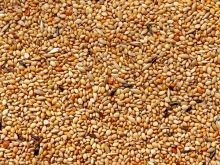

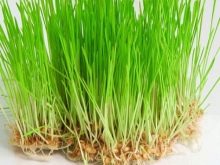
Varieties
In total, there are 7 species of grass parrots, each of which has its own unique color. Let's take a closer look at each of these types.
Rosy-bellied
The pink-bellied parrot, also known as the boerca. The scientific name is Neophema bourkii. The size of the bird is about 23 cm, the length of the tail is about 10 cm. The plumage of this individual has a brown tint, the abdomen is colored red-pink. On the cheeks of the female, the feathers are white, and the male has a blue speck on the forehead. In nature, the pink-bellied parrot makes nests in the hollows of trees. The female can lay 3-5 eggs at a time, which incubates for 2-3 weeks.
The hatched chicks stay in the parental nest for about a month, after which they are completely ready for independent life and leave the nest. This species was introduced to Europe in the 19th century and became so fond of that by the beginning of the 20th century the species was on the verge of extinction. Therefore, the Australian authorities have banned their export. The population has now been restored.
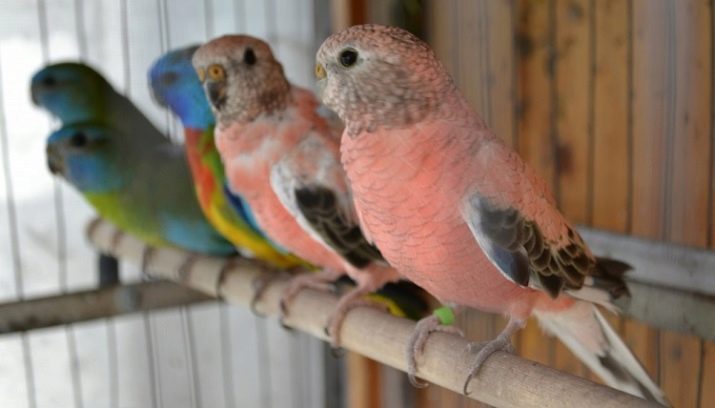
Azure
Azure parrot, scientifically Neophema pulchella. The dimensions of the bird are the same as in the previous species. The color of the males is also quite bright. The back is painted in a deep green color, and the feathers on the abdomen are yellow chicken color. On the head is a cap made of delicate turquoise small feathers. The wings have a double color: closer to the base, the feathers are red-brown, and on the tips of the wings, as if to match the cap, there are blue-colored gloves. On the paws, the color is bright pink, the beak is the color of gray asphalt. The female azure parrot is easily distinguished by its more modest attire.
The main color in females, like in males, is dark green, the abdomen is also yellow, but the color is not as saturated as in males. And the red shades in females are absent altogether. On the inner side of the wings there are white spots. Azure parrots also nest in hollows, lay 5-8 eggs, fly and run quickly.
In a calm state, the bird chirps quietly. If she is stressed or unhappy with something, she makes sounds like a creak or loud chirping.
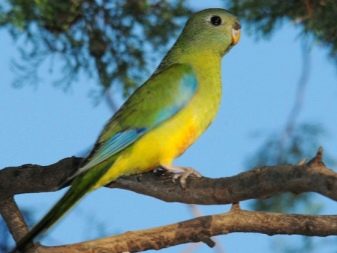
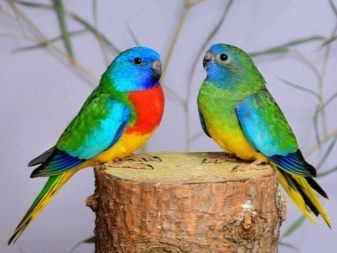
Golden-bellied parrot
In some sources, this species is also called orange- or golden-bellied. The scientific name is Neophema chrysogaster. The parrot lives on the islands of Tasmania and King. Refers to an endangered species, trade in which is prohibited. The size of the golden parrot is no more than 20 cm. The main color of the male is emerald green, on the forehead there is a blue spot with a blue tint, the cheeks are yellowish, the breast and belly are of a protective marsh color. There is a bright orange spot on the lower abdomen, which is why the species got its name.
On the bend of the wings, the feathers are dark purple, and the females have a white stripe on the inside, which the males do not have.In nature, they prefer to settle on the sea coast, in an area with low vegetation. They nest inside eucalyptus trees in late autumn - early winter. One clutch usually contains 4 to 6 eggs. Hatching of chicks lasts 3 weeks, and after 5 weeks the chicks leave the nest.
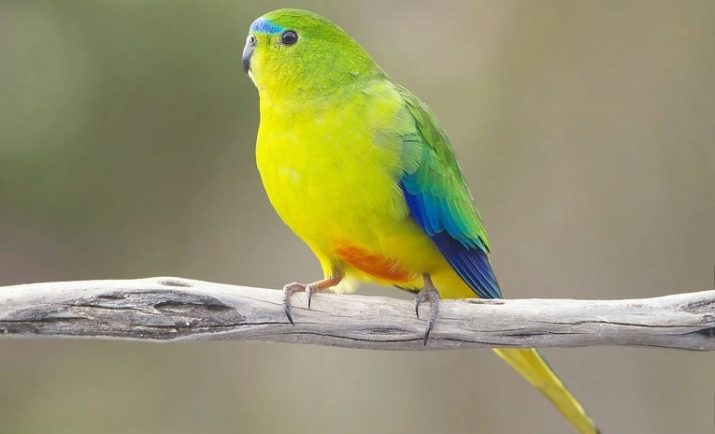
Blue-winged
In scientific sources, it is designated as Neophema chrysostoma. A rare endangered species, included in the list of the convention banning the sale of rare species of flora and fauna, therefore it is practically not found in pet stores. You can see it only in some nurseries. The body size of the blue-winged parrot is standard, the main color is also green.
There are small yellow blotches on the browbone and in the tail zone, the same ones are on the cheeks of the bird. A thin blue bridle is observed on the forehead, the same color as in the coverts on the wings. Outside, the wings are dark brown, the tail is light yellow in the middle, smoothly turning into gray-green. Traditionally, the female's color is less intense than that of the male.

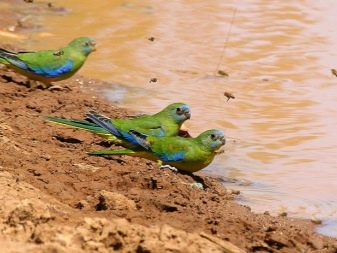
Decorated or elegant
Decorated or elegant, in Latin Neophema splendida. Body sizes are standard, the dominant color in the color is green with an olive tint. The superciliary area and folds of the wings are deep blue, the tail in the middle is blue with a grayish tint, closer to the edge is light yellow.
Male and female can be distinguished by the presence of a pale orange speck on the underside of the abdomen. It feeds mainly on plant foods, builds nests on branches or stumps. The female lays up to 5 eggs once a year, in early autumn. Birds live in captivity for more than 10 years.

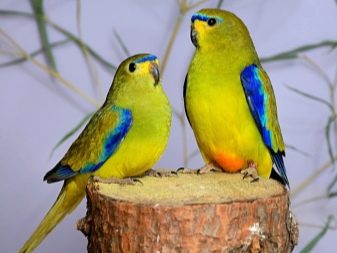
Rocky
In some sources, this species is called stone. The scientific name is Neophema petrophila. It is rarely found at home, as it is an endangered species and is protected by law in its historical homeland. The size of a rock parrot is slightly more than 20 cm, the main color is marsh green, the breast is yellow, on the abdomen there is a barely noticeable reddish downy. The superciliary area is blue, with a smooth transition to blue. The tail of a complex color is blue-green above, yellow below. The wings are blue at the fold, blue at the edges.
Females are traditionally less brightly dressed, but have a white stripe on the inside of the wings. Feathers on paws and beak are gray. In nature, they live in the immediate vicinity of water bodies, in rocky terrain, with sparse vegetation. It flies poorly and only over short distances, preferring to hide in dense grass. Nests are built in rocky cuttings.
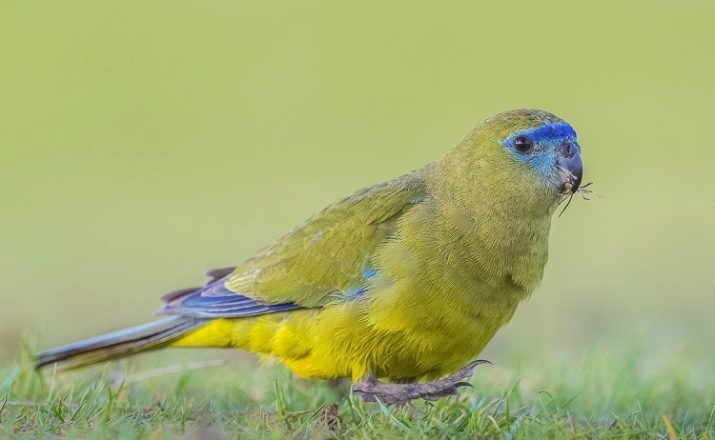
Red-breasted
This species is considered to be one of the most beautiful of all grass parrots. Thanks to its special coloring, it is also called glossy. In the scientific literature, the species is called Neophema splendida. With standard body sizes, the red-breasted parrot has a tail as much as 17 cm! The male has an elegant shiny blue cap, a bright purple scarf around his throat. The upper part of the bird - the back and tail - are green, and the bottom is multicolored: the abdomen and lower tail feathers are yellow, the abdomen is bright yellow, and the breast is bright scarlet.
The wings are black with a blue tint at the ends, covered with blue feathers from above. The feet are neutral beige and the beak is bluish black. Like other species, the female's color is much more modest than that of the male. And it has a white stripe on the inside of the wing. Parrots of this selection prefer flat areas, often settle on farms and in orchards. They prefer to huddle in flocks of up to 20 individuals, at the end of summer they begin to nest.
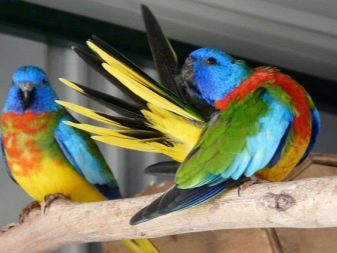

In nature, the species is very rare; at the end of the 20th century, there were only about 200 individuals. Protected by law.
For information on what you can and cannot give to grass parrots, see the next video.








